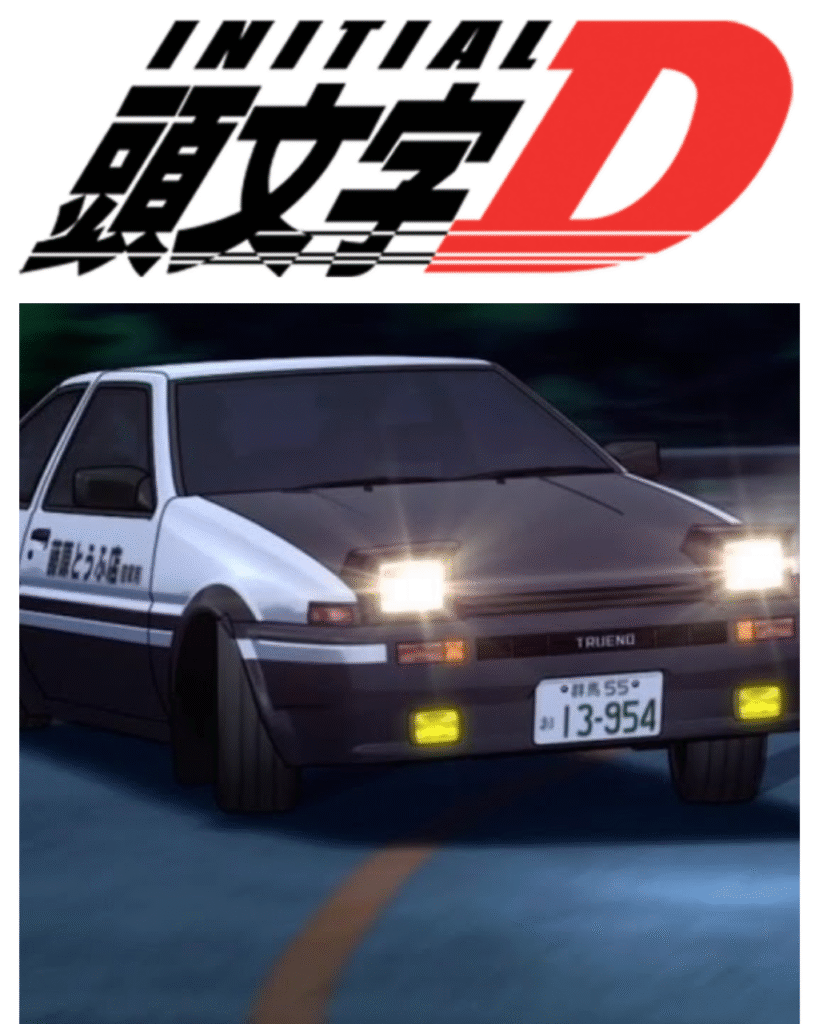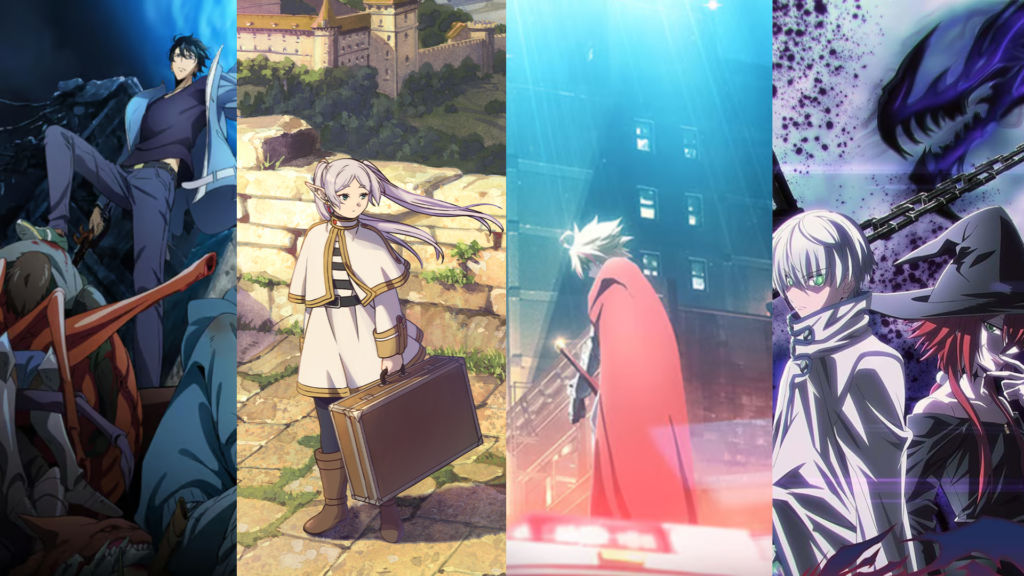
When Initial D first screeched onto screens in 1998, it didn’t just introduce audiences to the world of street racing, it defined it forever. Based on Shuichi Shigeno’s manga, this anime about a tofu delivery boy who moonlights as a downhill racing prodigy became a global sensation, blending hyper realistic car physics with a synth heavy Eurobeat soundtrack that still gets hearts racing today. More than just an adrenaline rush, Initial D is a coming of age story about passion, legacy, and the roar of an 86’s engine at 11,000 RPM.
The Plot: From Tofu to Touge Legend
The story follows Takumi Fujiwara, an unassuming high schooler who unknowingly honed his driving skills delivering tofu in his father’s Toyota AE86 Trueno on Mount Akina’s treacherous passes. When the local Akina Speed Stars racing team gets humiliated by the RedSuns, a rival team led by the cocky Ryosuke Takahashi, Takumi is thrust into the underground world of touge (mountain pass) racing.
The AE86: More than a car, it’s a character. Underpowered but perfectly balanced, it becomes a symbol of underdog triumph.
The Rivals: From the Emperor team’s GT R to Shingo’s deadly gutter technique, each race introduces new challenges that force Takumi to evolve.
Bunta Fujiwara: Takumi’s enigmatic father, a former legend himself, whose tough love training hides deeper intentions.
By the end of Stage 1, Takumi isn’t just racing for fun, he’s battling for identity, torn between his quiet life and the thrill of the touge.
Themes: More Than Just Speed
The Weight of Legacy:
Takumi’s AE86 isn’t just a car, it’s his father’s past, his own future, and a metaphor for inherited talent. Can he step out of Bunta’s shadow?
The Philosophy of Driving:
Races aren’t won with raw power but technique, instinct, and mental warfare. Ryosuke’s “theory of racing” turns each battle into a chess match at 90mph.
The Cost of Obsession:
Characters like Keisuke Takahashi (Ryosuke’s brother) and Kyoichi Sudo (the “Emperor”) risk everything for victory, questioning what truly matters.
Animation & Sound: A Synesthetic Rush
CGI Cars, Hand Drawn Drama: The hybrid animation was revolutionary in 1998. While the early CGI cars look dated now, their weight and motion feel viscerally real,especially during drifts.
Eurobeat Adrenaline: Songs like “Deja Vu” and “Running in the 90s” aren’t just background music,they’re the heartbeat of every race, syncing perfectly with tire screeches and engine screams.
Sound Design: The whine of a 4AGE engine, the “bwoah” of lift off oversteer,this anime taught a generation what real driving sounds like.
Characters: More Than Their Horsepower
Takumi Fujiwara: A reluctant hero whose natural talent clashes with his lack of ambition. His growth from apathetic teen to passionate racer is the series’ soul.
Ryosuke Takahashi: The “White Comet,” a genius who sees racing as a science. His mentorship of Takumi adds depth to their rivalry.
Itsuki Takeuchi: The comic relief best friend who dreams of being a racer but lacks skill, a poignant foil to Takumi.
Mogi Natsuki: Takumi’s love interest, whose subplot explores the dark side of materialism in ’90s Japan.
Legacy: The Birth of a Global Subculture
Initial D didn’t just inspire,it created real world impact:
Car Culture – AE86 prices skyrocketed; drifting became a mainstream sport.
Racing Games – The Initial D Arcade Stage series and Forza Horizon’s touge routes owe it everything.
Memes & Nostalgia – “DEJA VU” remixes and “Multi Stage Turbo” jokes still dominate car forums.
Even today, its four stage anime series, manga, and live action adaptations keep the legend alive.
Final Verdict: Ride through 90s car culture that still leaves competitors in the dust
Initial D is the definitive racing anime,a perfect balance of technical detail, emotional stakes, and sheer hype. It’s not just about cars; it’s about the drive to surpass your limits.
Best For: Gearheads, ’90s nostalgics, or anyone who’s ever screamed “NANI?! KANSEI DORIFTO?!”
Flaws (Nitpicks for Purists):
Early CGI Aging – The blocky cars in Stage 1 may distract modern viewers.
Repetitive Formula – Some races follow a predictable “underdog wins” pattern.
Mogi’s Arc – Her storyline feels undercooked compared to the racing drama.
Skip If: You hate engine talk or think Eurobeat is cringe (you’re wrong).


